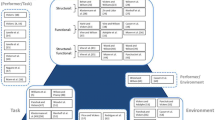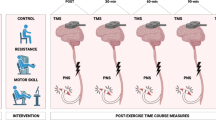Abstract
The aim of the study was to compare the coordination of hand grip (G) and load force (a force that tends to cause slippage of a grasped object; L) in static bimanual manipulation tasks with the same data obtained from the similar dynamic tasks. Based on the previous findings obtained from dynamic tasks, it was hypothesized that an increase in the rate of L change would be predominantly associated with a decrease in the coordination of the within limb forces (coordination of G and L of each hand as assessed through the correlation coefficients), while a decrease in coordination of interlimb forces (between two G and two L) will be less pronounced. Regarding the pattern of modulation of G, the same increase in L frequency was also expected to be associated with a decrease in G gain and an increase in G offset (as assessed by slope and intercept of the regression lines obtained from G to L diagrams, respectively), as well as with an increase in average G/L ratio. Subjects exerted oscillatory isometric L profiles by simultaneous pulling out two handles of an externally fixed device under an exceptionally wide range of L frequencies (0.67–3.33 Hz). The results demonstrated relatively high correlation coefficients between both the interlimb and within limb forces that were only moderately affected under sub-maximal L frequencies. Furthermore, the hypothesized changes in G gain and offset appeared only under the highest L frequency, while the G/L ratio remained unaffected. We conclude that, when compared with the dynamic tasks based on the unconstrained movements of hand-held objects that produce similar pattern of L change, the static manipulation tasks demonstrate a consistent and highly coordinated pattern of bilateral G and L under a wide range of frequencies. However, the neural mechanisms that play a role in the revealed differences need further elucidation.





Similar content being viewed by others
References
Augurelle AS, Smith AM, Lejeune T, Thonnard JL (2003) Importance of cutaneous feedback in maintaining a secure grip during manipulation of hand-held objects. J Neurophysiol 89:665–671
Blank R, Breitenbach A, Nitschke M, Heizer W, Letzgus S, Hermsdorfer J (2001) Human development of grip force modulation relating to cyclic movement-induced inertial loads. Exp Brain Res 138:193–199
Bracewell RM, Wing AM, Soper HM, Clark KG (2003) Predictive and reactive co-ordination of grip and load forces in bimanual lifting in man. Eur J Neurosci 18:2396–2402
Burstedt MK, Flanagan JR, Johansson RS (1999) Control of grasp stability in humans under different frictional conditions during multidigit manipulation. J Neurophysiol 82:2393–2405
Diedrichsen J, Hazeltine E, Nurss WK, Ivry RB (2003) The role of the corpus callosum in the coupling of bimanual isometric force pulses. J Neurophysiol 90:2409–2418
Flanagan JR, Wing AM (1993) Modulation of grip force with load force during point-to-point arm movements. Exp Brain Res 95:131–143
Flanagan JR, Wing AM (1995) The stability of precision grip forces during cyclic arm movements with a hand-held load. Exp Brain Res 105:455–464
Flanagan JR, Wing AM (1997) The role of internal models in motion planning and control: evidence from grip force adjustments during movements of hand-held loads. J Neurosci 17:1519–1528
Flanagan JR, Tresilian J, Wing AM (1993) Coupling of grip force and load force during arm movements with grasped objects. Neurosci Lett 152:53–56
Gilles MA, Wing AM (2003) Age-related changes in grip force and dynamics of hand movement. J Mot Behav 35:79–85
Gysin P, Kaminski TR, Gordon AM (2003) Coordination of fingertip forces in object transport during locomotion. Exp Brain Res 149:371–379
Jaric S, Russell EM, Collins JJ, Marwaha R (2005) Coordination of hand grip and load forces in unidirectional and bidirectional static force production tasks. Neurosci Lett 381:51–56
Johansson RS, Westling G (1984) Roles of glabrous skin receptors and sensorimotor memory in automatic control of precision grip when lifting rougher or more slippery objects. Exp Brain Res 56:550–564
Johansson RS, Westling G (1988) Coordinated isometric muscle commands adequately and erroneously programmed for the weight during lifting task with precision grip. Exp Brain Res 71:59–71
Kelso JA (1984) Phase transitions and critical behavior in human bimanual coordination. Am J Physiol 246:R1000–R1004
Kelso JA, Southard DL, Goodman D (1979) On the coordination of two-handed movements. J Exp Psychol Hum Percept Perform 5:229–238
Li S, Danion F, Latash ML, Li ZM, Zatsiorsky VM (2001) Bilateral deficit and symmetry in finger force production during two-hand multifinger tasks. Exp Brain Res 141:530–540
McDonnell MN, Ridding MC, Flavel SC, Miles TS (2004) Effect of human grip strategy on force control in precision tasks. Exp Brain Res 161(3):368–373
Monzee J, Lamarre Y, Smith AM (2003) The effects of digital anesthesia on force control using a precision grip. J Neurophysiol 89:672–683
Nowak DA, Hermsdorfer J, Marquardt C, Fuchs HH (2002) Grip and load force coupling during discrete vertical arm movements with a grasped object in cerebellar atrophy. Exp Brain Res 145:28–39
Nowak DA, Hermsdorfer J, Marquardt C, Topka H (2003) Moving objects with clumsy fingers: how predictive is grip force control in patients with impaired manual sensibility? Clin Neurophysiol 114:472–487
Ohki Y, Johansson RS (1999) Sensorimotor interactions between pairs of fingers in bimanual and unimanual manipulative tasks. Exp Brain Res 127:43–53
Oldfield RC (1971) The assessment and analysis of handedness: the Edinburgh inventory. Neuropsychologia 9:97–113
Perrig S, Kazennikov O, Wiesendanger M (1999) Time structure of a goal-directed bimanual skill and its dependence on task constraints. Behav Brain Res 103:95–104
Scholz JP, Latash ML (1998) A study of a bimanual synergy associated with holding an object. Hum Mov Sci 17:753–779
Serrien DJ, Wiesendanger M (2001a) Bimanual organization of manipulative forces: evidence from erroneous feedforward programming of precision grip. Eur J Neurosci 13:1825–1832
Serrien DJ, Wiesendanger M (2001b) Dissociation of grip/load-force coupling during a bimanual manipulative assignment. Exp Brain Res 136:417–420
Serrien DJ, Wiesendanger M (2001c) A higher-order mechanism overrules the automatic grip-load force constraint during bimanual asymmetrical movements. Behav Brain Res 118:153–160
Serrien DJ, Wiesendanger M (2001d) Regulation of grasping forces during bimanual in-phase and anti-phase coordination. Neuropsychologia 39:1379–1384
Spijkers W, Heuer H (1995) Structural constraints on the performance of symmetrical bimanual movements with different amplitudes. Quart J Exp Psychol A 48:716–740
Steglich C, Heuer H, Spijkers W, Kleinsorge T (1999) Bimanual coupling during the specification of isometric forces. Exp Brain Res 129:302–316
Swinnen SP, Young DE, Walter CB, Serrien DJ (1991) Control of asymmetrical bimanual movements. Exp Brain Res 85:163–173
White O, McIntyre J, Augurelle AS, Thonnard JL (2005) Do novel gravitational environments alter the grip-force/load-force coupling at the fingertips? Exp Brain Res 163(3):324–334
Zatsiorsky VM, Gao F, Latash ML (2004) Motor control goes beyond physics: differential effects of gravity and inertia on finger forces during manipulation of hand-held objects. Exp Brain Res 162(3):300–308
Acknowledgments
The study was supported in part by a grant from the National Multiple Sclerosis Society (PP1018) and a grant from the University of Delaware Research Foundation to the first author.
Author information
Authors and Affiliations
Corresponding author
Rights and permissions
About this article
Cite this article
Jaric, S., Collins, J.J., Marwaha, R. et al. Interlimb and within limb force coordination in static bimanual manipulation task. Exp Brain Res 168, 88–97 (2006). https://doi.org/10.1007/s00221-005-0070-6
Received:
Accepted:
Published:
Issue Date:
DOI: https://doi.org/10.1007/s00221-005-0070-6




